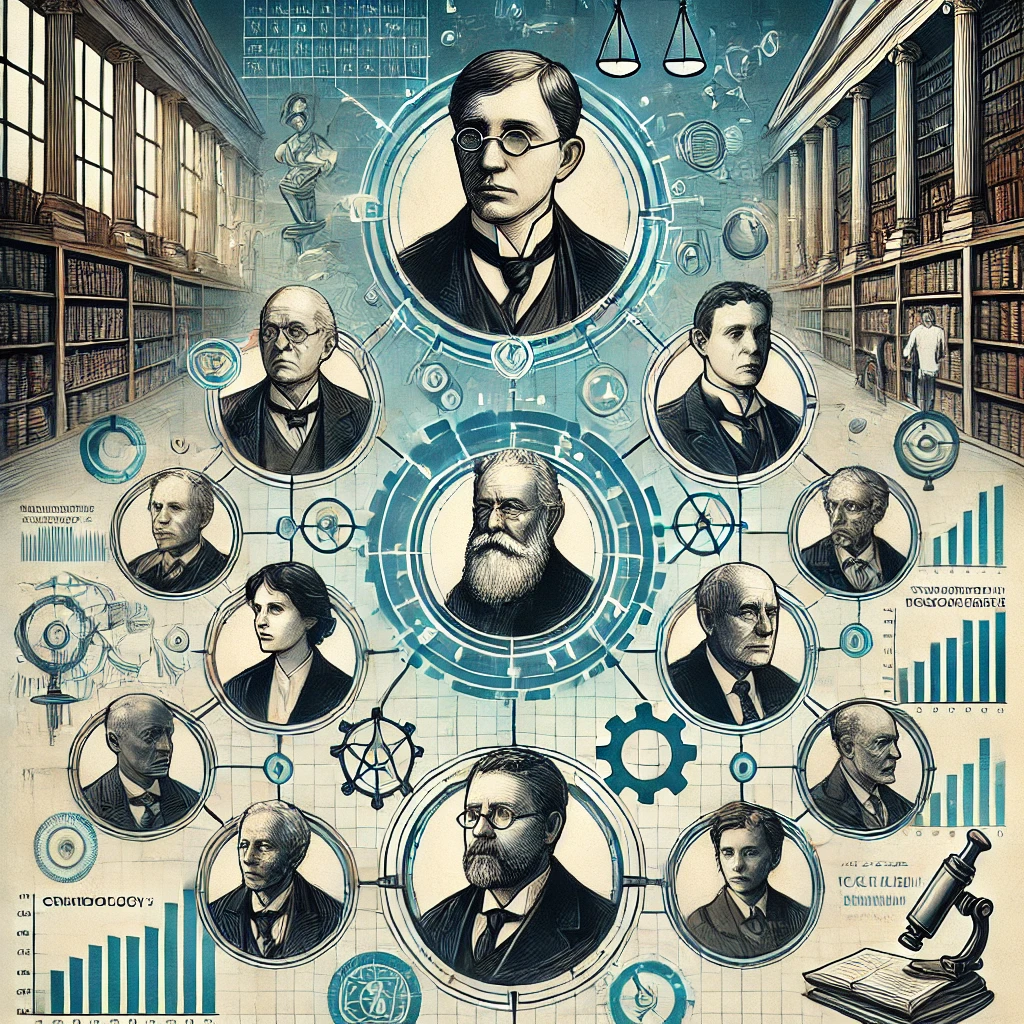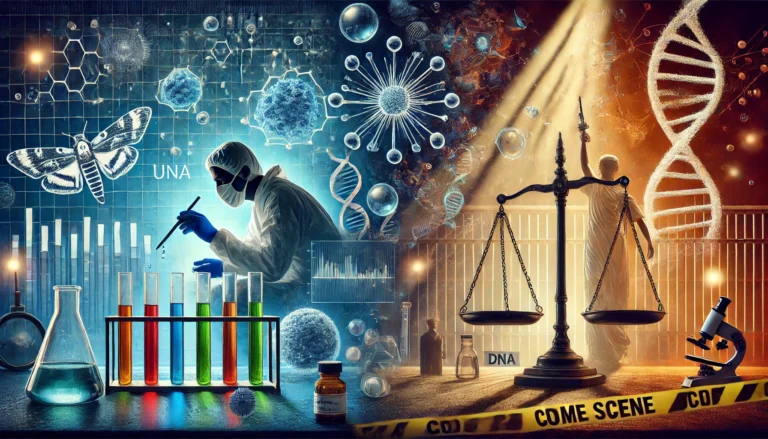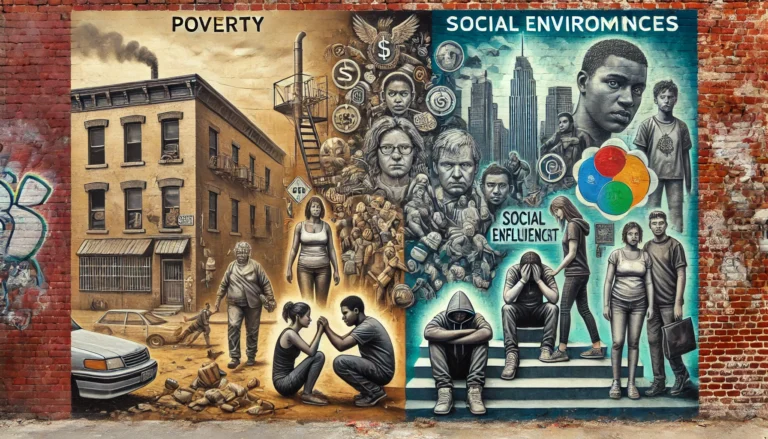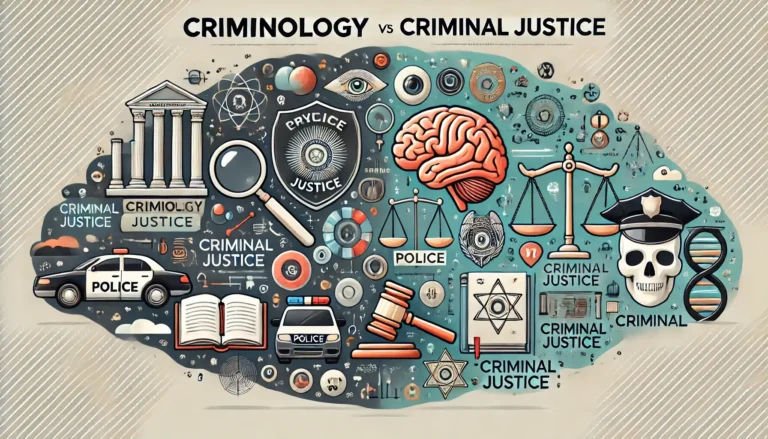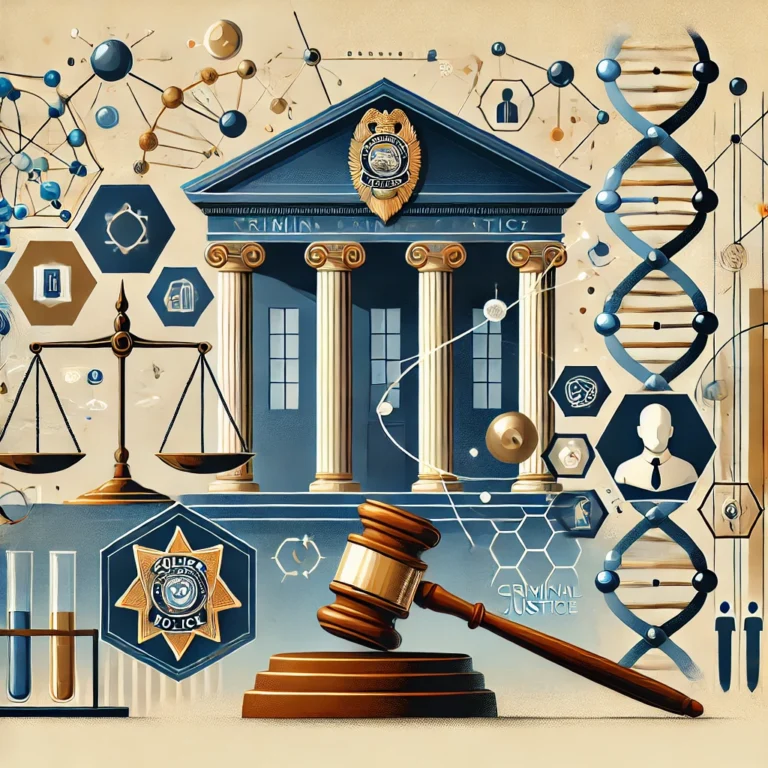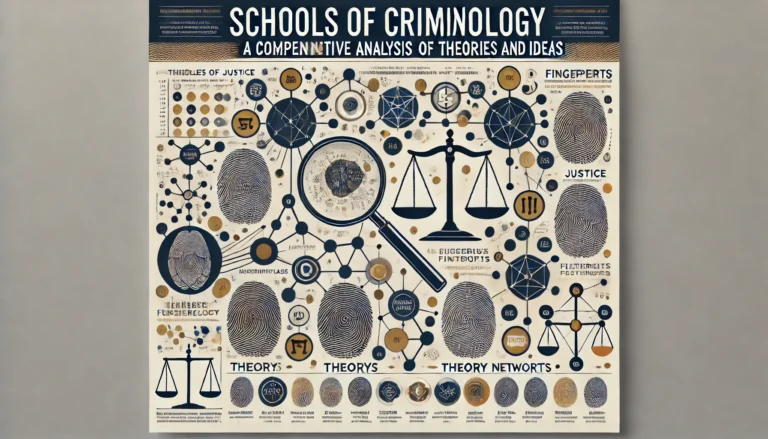Key Thinkers in Criminology
Criminology has developed into a multidisciplinary field, shaped by the contributions of various thinkers who laid its theoretical foundations and advanced its methodologies. From early biological theories to contemporary sociological and psychological perspectives, these key thinkers have significantly influenced how crime is understood and addressed. This article explores the contributions of pivotal criminologists and examines their enduring impact on modern criminological studies and practices.
Cesare Beccaria: The Pioneer of Classical Criminology
Cesare Beccaria (1738–1794), an Italian philosopher and jurist, is considered the father of classical criminology. His landmark work, On Crimes and Punishments (1764), challenged the harsh and arbitrary justice systems of his time.
- Key Contributions
- Beccaria advocated for rational and proportional punishment, emphasizing that penalties should be swift, certain, and commensurate with the crime committed.
- He introduced the idea of deterrence, arguing that the certainty of punishment, rather than its severity, was the key to preventing crime.
- Impact on Modern Studies
- Beccaria’s ideas form the basis of many contemporary justice systems, influencing sentencing guidelines and policies aimed at reducing crime through deterrence.
- His emphasis on legal fairness has shaped human rights protections and the principle of proportionality in law enforcement.
Cesare Lombroso: The Founder of the Biological School
Cesare Lombroso (1835–1909), often referred to as the father of modern criminology, shifted the focus from abstract philosophical theories to empirical studies of criminal behavior. His work marked the beginning of scientific criminology.
- Key Contributions
- Lombroso’s book, The Criminal Man (1876), introduced the theory that criminal behavior is inherited and can be identified through physical anomalies.
- He categorized criminals into types, such as “born criminals” and “occasional criminals,” based on biological and environmental factors.
- Criticism and Legacy
- While his theories of atavism and physical markers of criminality have been widely discredited, Lombroso’s pioneering use of empirical methods laid the groundwork for modern criminological research.
- Impact on Modern Studies
- Lombroso’s focus on individual traits continues to influence fields such as forensic science and neurocriminology.
- His work opened the door for exploring the interplay between biology and environment in shaping criminal behavior.
Émile Durkheim: The Sociological Perspective
Émile Durkheim (1858–1917) introduced a sociological approach to understanding crime, emphasizing its relationship to social structures and norms.
- Key Contributions
- In his seminal work, The Division of Labor in Society (1893), Durkheim described crime as a normal and inevitable aspect of society.
- He introduced the concept of anomie, a state of normlessness that occurs during periods of social upheaval, leading to increased deviance and criminality.
- Impact on Modern Studies
- Durkheim’s ideas underpin many sociological theories of crime, including strain theory and social disorganization theory.
- His emphasis on the social context of crime has inspired policies aimed at strengthening community ties and reducing inequality.
Robert K. Merton: Strain Theory
Robert K. Merton (1910–2003), an American sociologist, built on Durkheim’s concept of anomie to develop strain theory, which explains crime as a response to societal pressures.
- Key Contributions
- Merton argued that societal goals, such as wealth and success, are often inaccessible to certain groups due to structural inequalities. This mismatch creates strain, leading individuals to adopt deviant or criminal behavior to achieve these goals.
- Impact on Modern Studies
- Strain theory has informed research on the relationship between socioeconomic status and crime, highlighting the role of inequality and opportunity in fostering criminal behavior.
- It has influenced policies addressing systemic inequalities and creating opportunities for marginalized groups.

Sigmund Freud: Psychological Insights into Crime
Sigmund Freud (1856–1939), though primarily known for his work in psychology, provided insights into criminal behavior through his psychoanalytic theory.
- Key Contributions
- Freud suggested that unconscious conflicts, repressed desires, and early childhood experiences could drive individuals toward deviant behavior.
- His ideas about the id, ego, and superego provided a framework for understanding the psychological dynamics of crime.
- Impact on Modern Studies
- Freud’s theories have influenced therapeutic approaches in criminal rehabilitation, including counseling and cognitive-behavioral therapy.
- His emphasis on psychological factors continues to inform research on the links between mental health and criminality.
Enrico Ferri: Multifactorial Approach to Crime
Enrico Ferri (1856–1929), a student of Lombroso, expanded upon his mentor’s ideas by incorporating environmental and social factors into his analysis of crime.
- Key Contributions
- Ferri’s multifactorial theory emphasized the interplay between biological, psychological, and social factors in determining criminal behavior.
- He argued that crime prevention should focus on addressing these root causes through education, social reform, and environmental improvements.
- Impact on Modern Studies
- Ferri’s holistic approach has inspired modern criminological models that integrate multiple disciplines to understand crime.
- His work underscores the importance of comprehensive strategies for crime prevention and rehabilitation.
Edwin Sutherland: Differential Association Theory
Edwin H. Sutherland (1883–1950) introduced one of the most influential sociological theories of crime: differential association theory.
- Key Contributions
- Sutherland argued that criminal behavior is learned through interaction with others, particularly within close social groups.
- He highlighted the role of cultural and social influences in shaping attitudes toward crime.
- Impact on Modern Studies
- Differential association theory has been pivotal in understanding white-collar crime and gang-related activities.
- It has informed policies that target peer influence and promote positive role models.
Modern Thinkers and Contemporary Contributions
Criminology continues to evolve, with contemporary thinkers building on the foundations laid by their predecessors.
- John Braithwaite: Restorative Justice
- Braithwaite’s work on restorative justice emphasizes repairing harm caused by crime through reconciliation between offenders and victims.
- His approach has influenced alternative sentencing programs and community-based justice initiatives.
- Travis Hirschi: Social Control Theory
- Hirschi’s theory highlights the importance of social bonds in preventing crime. Strong connections to family, school, and community act as protective factors against deviance.
- His work informs policies aimed at strengthening familial and educational support systems.
- Feminist Criminology
- Scholars such as Carol Smart and Kathleen Daly have challenged traditional criminology to address gendered aspects of crime and the experiences of women as victims, offenders, and professionals in the justice system.
- Feminist perspectives have broadened the scope of criminology, emphasizing the need for gender-sensitive policies and research.
Conclusion
The evolution of criminology has been profoundly shaped by the contributions of key thinkers, each bringing unique perspectives to the study of crime. From Beccaria’s rational approach to justice, to Lombroso’s biological focus, to modern sociological and psychological theories, these pioneers have laid the foundation for understanding crime in its complexity.
Their collective legacy continues to influence modern criminology, inspiring research, policy development, and practical applications aimed at creating safer and more just societies. As criminology advances, it remains a dynamic field that draws on the insights of its past while adapting to the challenges of the present and future.

